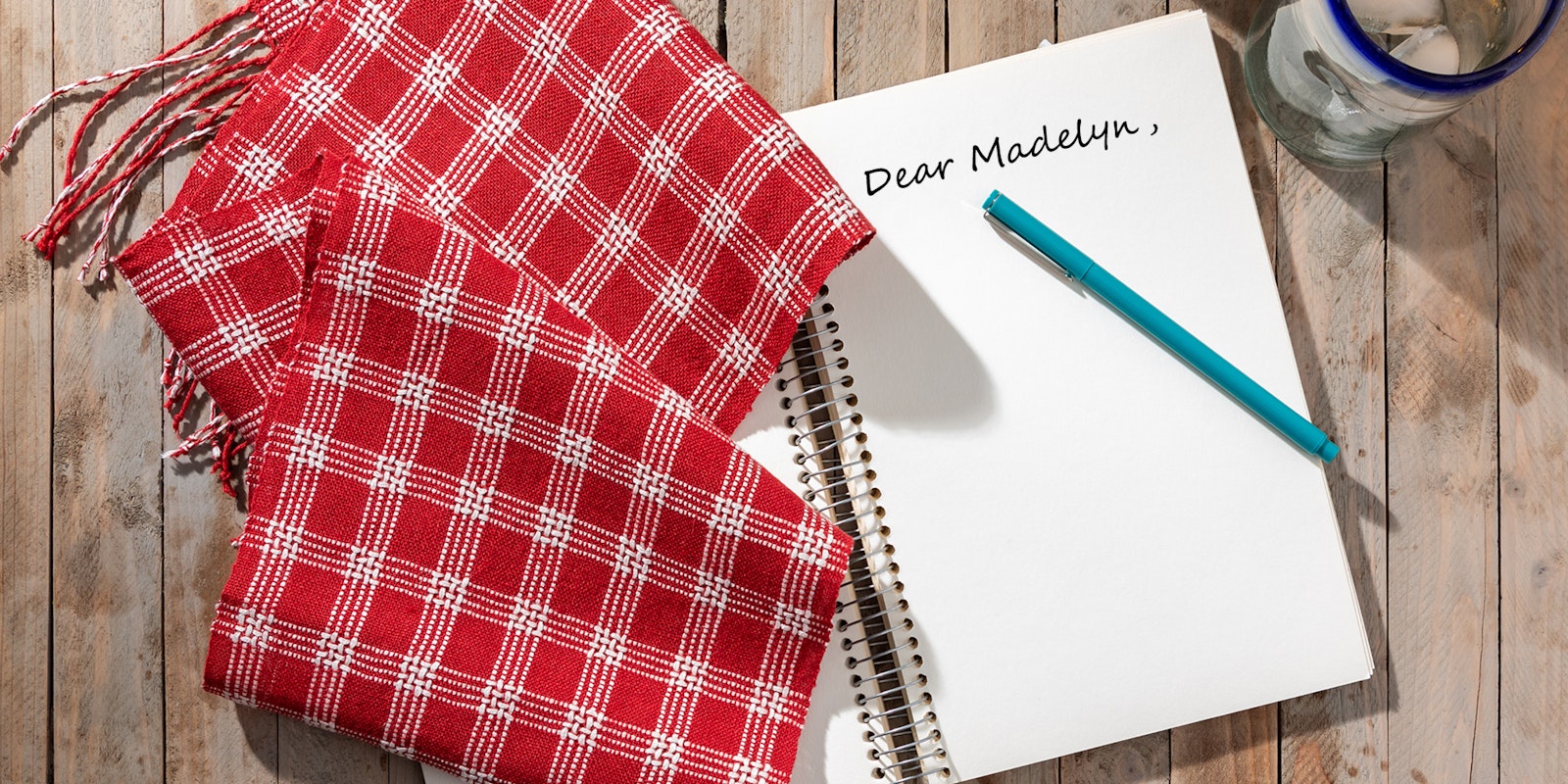Hi Madelyn!
I have fallen in love with weaving by seeing the handwovens at our local guild’s annual sale. I bought two dish towels and a pillow. They told me the towels are waffle weave and the pillow is overshot (whatever that means). I’m a knitter, and so I bought a rigid-heddle loom hoping to weave some of pieces I saw at the guild sale. A knitting friend told me I wouldn’t be able to do that on my new loom. So, how do I find out what loom I should get?
—Sandy
Hi Sandy! You are about to walk through the door of many new things to buy and even more new things to learn. It is true that you can weave waffle weave on a rigid-heddle loom (see Kati Meek, “Waffle Weave on a Rigid-Heddle Loom? Yes You Can!”, May/June 2010, pp. 52–53. You’ll have to use a pick-up stick (picking up threads behind the heddle), but the process isn’t too time-consuming.
 Kati's Meek's Waffle Weave Runner from Handowoven May/June 2010
Kati's Meek's Waffle Weave Runner from Handowoven May/June 2010
Overshot is another matter. There is a way of weaving overshot on a rigid-heddle loom (described in The Xenakis Technique for the Construction of Four Harness Textiles, but it uses three rigid heddles and is not very easy to do.
For most of the pieces you saw in the sale, you will need a loom with shafts. WHICH loom and how many shafts is a matter of figuring out what you most want to weave. A 4-shaft loom will allow you to weave waffle weave, overshot, many different twills, some block weaves, and lots of textural effects. If you like a lot of patterning (fancy twills and block weaves that produce motifs on a background), you’ll want eight shafts or more. You could choose a table loom with four or eight shafts, but weaving is slow on a table loom because you’ll have to move levers with your hands (putting down the shuttle and moving each lever independently).
 Overshot Redux Scarf by Barbara Mitchell from Handwoven September/October 2020 was woven on a 4-shaft loom. Photo Credit: Matt Graves
Overshot Redux Scarf by Barbara Mitchell from Handwoven September/October 2020 was woven on a 4-shaft loom. Photo Credit: Matt Graves
A floor loom has treadles so you can weave with your hands and move the shafts with your feet. This allows a meditative rhythm of weaving that isn’t possible with any other kind of loom. There are even more choices involved in floor looms, though, in addition to the number of shafts and treadles. Small, light-weight floor looms can weave light-weight fabrics. Sturdy, heavy looms are better for rugs.
There are three basic mechanisms for making the shafts move, too. With jack floor looms, stepping on a treadle makes a shaft go up. Jack looms are easy to set up (tying the shafts to up to teach treadle) but the treadling can be heavy since you are lifting the shafts with your leg, essentially. Counterbalance looms pull some shafts down, raising others that are attached to them over a pulley. These looms are good for weaving rugs (and light to treadle) but usually limited to four shafts. Sturdy countermarch looms are good for all types of fabrics. Treadles are attached to both the shafts that go up and the shafts that go down. Treadling is light, therefore, but tying the treadles to ALL the shafts that move means making a LOT of ties.
 The Weaver's School on Whidbey Island, WA. Photo by Madelyn van der Hoogt
The Weaver's School on Whidbey Island, WA. Photo by Madelyn van der Hoogt
You wouldn’t want to choose any of these looms until you have more knowledge about them. The best way to learn about looms is to take a class at a place that has many different looms. When you know what you most want to weave and you have woven on the different types of looms, you can decide which one is for you.
Welcome to our world!
—Madelyn
Posted November 24, 2015 Revised June 20, 2022

